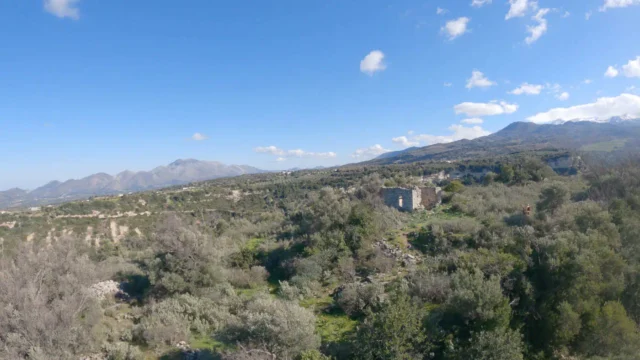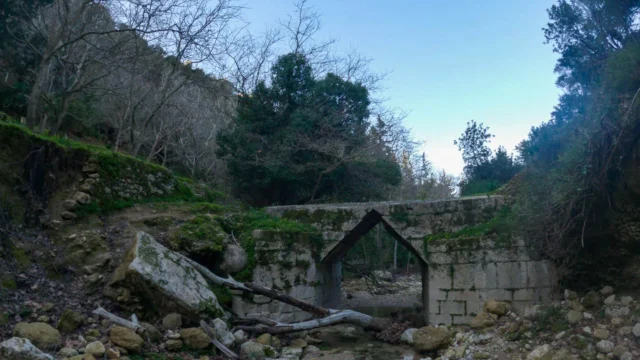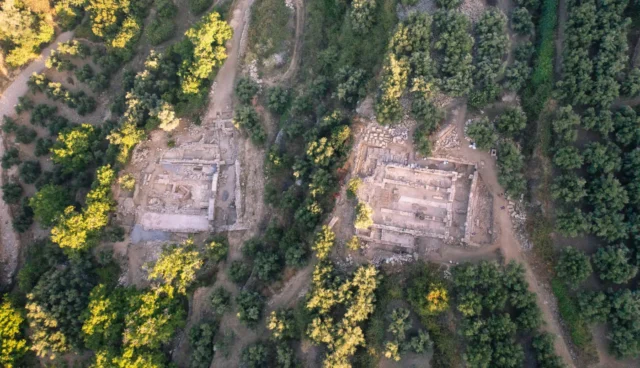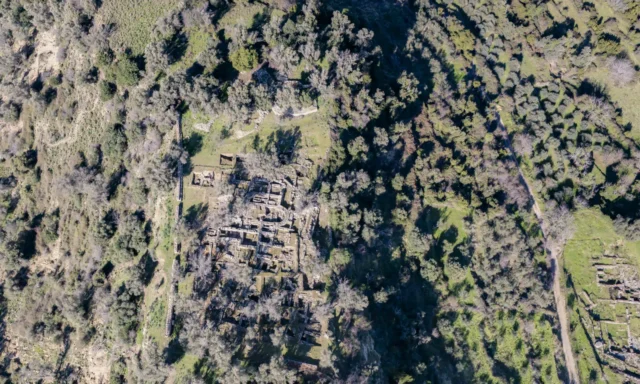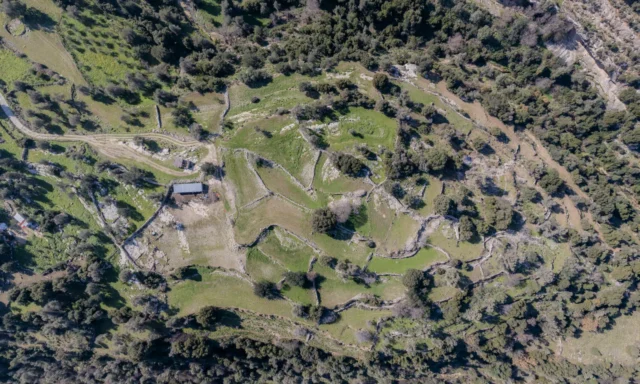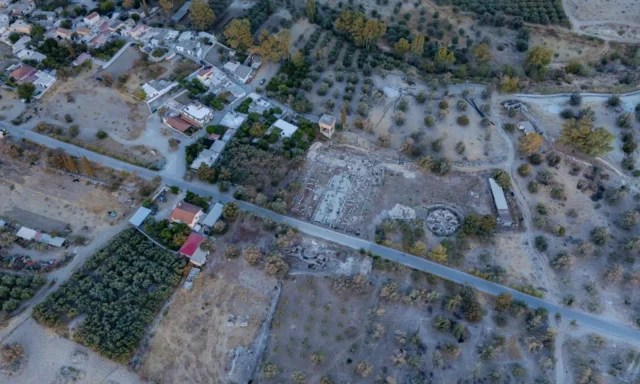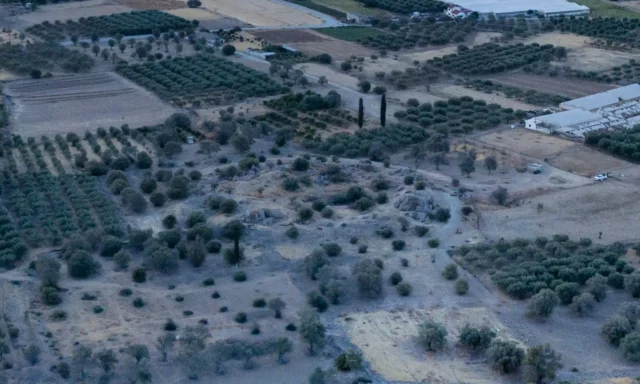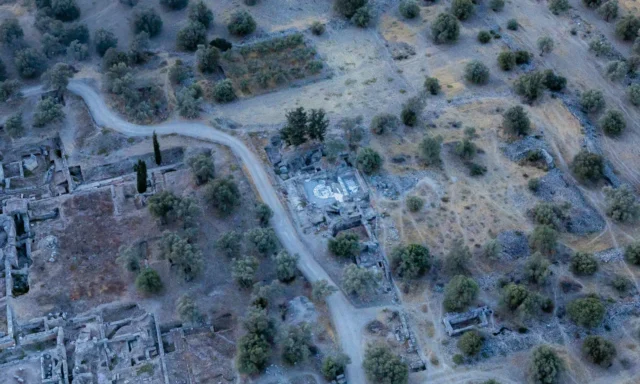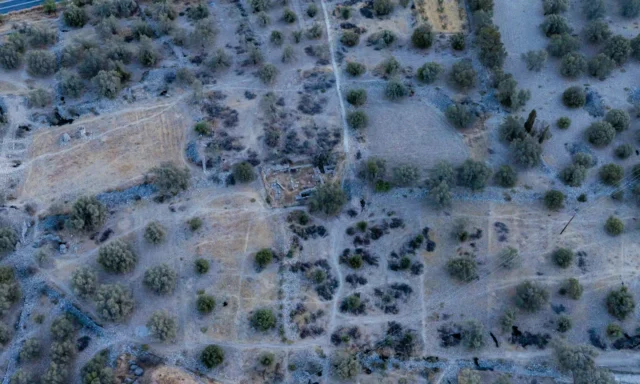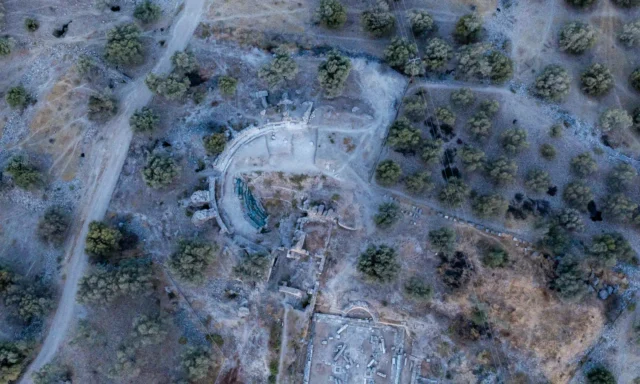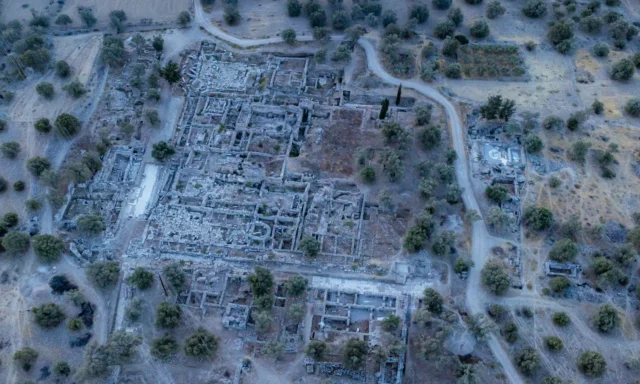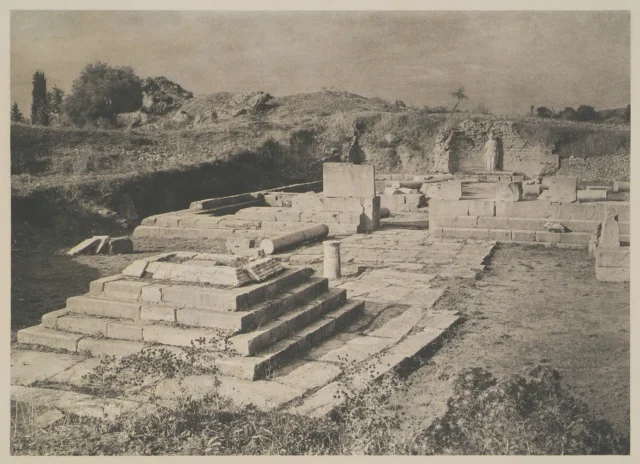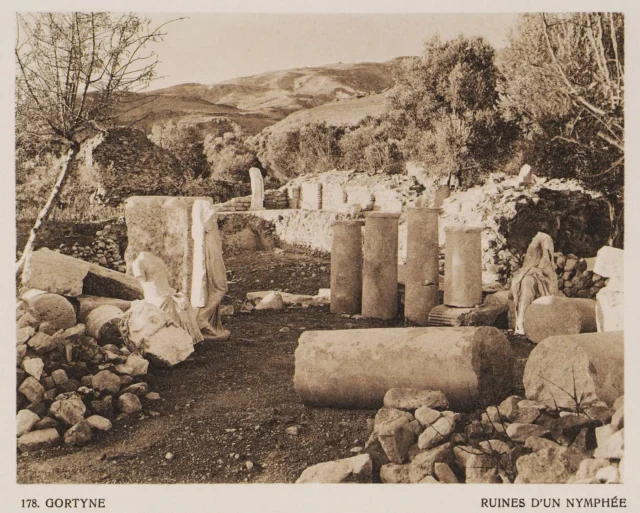22
listings found
Categories
Active filters:
The Circus at Gortyn
A significant Roman spectacle complex at the southeastern edge of Gortyn, the provincial capital of Crete and Cyrenaica. Constructed in the Severan period (early 3rd century CE) along with the amphitheater, it was a key entertainment venue. Primarily used for circus games and racing, its importance is noted in mid-4th century texts like the Expositio totius mundi et gentium. The venue likely had looser seating arrangements than amphitheaters. Its creation was part of an intensive construction phase.
The Acropolis of Onithe
The Acropolis of Onithe, a Hellenistic-era fortress potentially dating back to 1400 BC, occupies a strategic position on the Onithe plateau at 638 meters elevation. The site features a pseudo-isodomic wall enclosing a right-angled area with 12-meter sides and remnants of a defensive tower. A steep, natural cliff forms the southern boundary of the acropolis. The site's location provided control over key passages and access to the settlement, underscoring its strategic significance in ancient Crete. Pottery finds suggest the possibility of earlier settlement phases dating back to the Proto-Minoan and Late Minoan periods. The acropolis, referred to locally as 'Ntapia,' meaning fortification, likely played a role in Cretan revolts in 1821, 1878, and 1897.
The Megali Porta Thermae at Gortyn
A vast Roman bath complex located at the southern boundary of Gortyn, covering 3,600 square meters. Constructed in the Hadrianic or Antonine period (2nd century CE), it was a major public facility connected to the city's aqueduct system. The site also featured two twin temple buildings. In the 6th and 7th centuries CE, parts of the complex were reused for residential dwellings and workshops. A Christian basilica was later built in the area, utilizing a nearby desecrated sanctuary.
Agia Anna Church in Ancient Eleutherna
The Agia Anna basilica in Eleutherna offers insights into the city's transformation into a Christian center. Learn about its location, history, and significance.
Agia Eirini and Agios Markos in Eleutherna
Agia Eirini and Agios Markos are two archaeological sites in Eleutherna, Crete, featuring Early Christian basilicas.
The Acropolis of Eleutherna
The acropolis of Eleutherna, located on Prines hill, offers a glimpse into the city's history from the Bronze Age to the Early Byzantine period.
The Orthi Petra Necropolis at Eleutherna
Orthi Petra Necropolis in Eleutherna reveals Early Iron Age burial practices and social structures through diverse burial types and rich grave goods.
Katsivelos in Eleutherna
The Katsivelos archaeological site, located on a strategic hill near Eleutherna, Crete, shows continuous human activity from the Final Neolithic/Early Minoan II (c. 3000 BCE) through the Geometric period (c. 700 BCE). Excavations by the University of Crete revealed a settlement history starting with simple FN/EM II structures. The Middle Minoan period shows increased complexity with larger buildings, while the Late Minoan period suggests a decline in scale. The final Geometric phase indicates a small, scattered settlement before its abandonment.
The Hellenistic Settlement at Nisi, Eleutherna
The Hellenistic settlement at Nisi excavations has revealed houses, pottery kilns, and streets that show a focus on pottery production and trade.
Episcopal Basilica of Gortyn
The Episcopal Basilica of Gortyn in Crete was a major religious center during the Early Byzantine period. It features mosaic floors and marble elements.
The Amphitheater at Gortyn
The Amphitheater at Gortyn, a colossal Roman structure that once hosted gladiatorial combats and other spectacles and it transformed into an early Christian cemetery.
The South Baths near the Praetorium at Gortyn
Originally a gymnasium from the Augustan-Tiberian period, this complex was transformed into expansive public baths under Emperor Trajan in the 1st century CE. Located near the Praetorium, it served the Roman elite as a social and administrative hub. The facility included a caldarium, tepidarium, frigidarium, and palaestra, supplied by a robust aqueduct. The baths reflect Roman bathing culture and represent the empire's influence in Crete, remaining in use through the Early Byzantine period.
The Sanctuary of the Egyptian Gods at Gortyn
The Sanctuary of the Egyptian Gods at Gortyn, a testament to the diverse religious landscape of Roman Crete.
The Agora, Odeon, and the Great Code of Gortyn
The Agora, Odeon, and the Gortyn Law Code in Gortyna, Crete. Discover the heart of the ancient city's civic and legal life and its significance in Greek history.
The Great Theater of Gortyna
Located on the Acropolis hill's southeastern slopes, this Roman-era theater was built in the 2nd century CE. It features a semicircular cavea with a 93-meter diameter, accommodating around 7,500 spectators. This multifunctional venue hosted theatrical performances, religious festivals possibly linked to the cult of Apollo, and potential civic gatherings for the Koinon ton Kretaieon. After modifications in the 3rd century CE, it fell into decline during the Late Antique period and was abandoned.
The Pythion Theater in Gortyna
The Pythion Theater in Gortyna, an ancient Roman theater that hosted performances, ceremonies, and gatherings.
The Praetorium of Gortyna
The Praetorium of Gortyna, the administrative heart of Roman Crete.
The Temple of Apollo Pythios at Gortyna
The Temple of Apollo Pythios in Gortyna, an ancient sanctuary that witnessed centuries of religious and cultural activity.
The Nymphaeum Block in Gortyna
Explore the Nymphaeum Block in Gortyna, a microcosm of the city's evolution from Hellenistic to Byzantine times. Discover its temples, fountains, and workshops that tell the story of this vibrant urban center.











